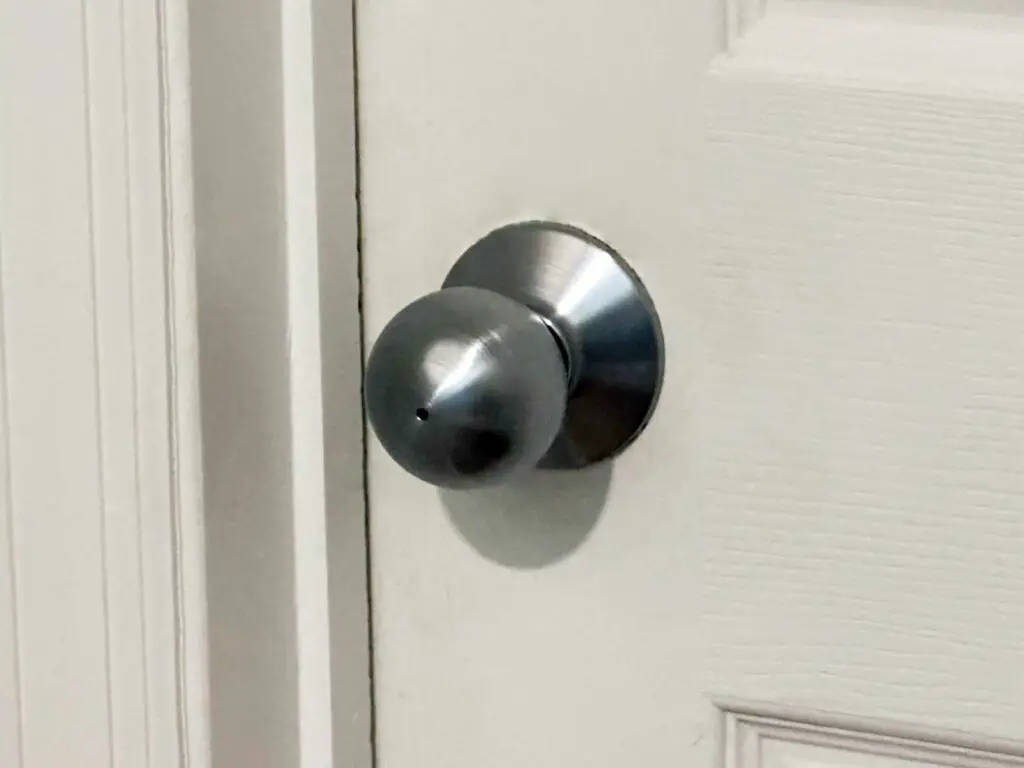It’s happened to all of us – you’re running late for work or frantically rushing to get the kids to school, and you suddenly realize your door knob won’t latch. That frustrating moment when you’re spinning the knob, but the door just won’t stay closed can be a major inconvenience. But don’t worry; fixing this common issue is easier than you might think. With a bit of DIY handiwork and some simple tools, you can solve this pesky problem in no time and make sure you’re not locked out (or in) again.
Door knobs that won’t latch are often due to misalignment between the latch and the strike plate on the door frame, or possibly because the latch has become worn out or dirty over time. By assessing the issue and tackling it head-on, you can save yourself from calling a locksmith or handling a much bigger problem down the line. Remember, knowledge is power, and understanding the underlying cause of a malfunctioning latch can be the key to unlocking the solution (pun definitely not intended).
Take it from someone who’s been there – when my door latch gave out on me, I thought the world was ending (or at least my plans for the day). But with a deep breath, some resourcefulness, and the right approach, I was able to fix the issue and regain control of my domain. So put on your DIY cap, grab your tools, and let’s dive into how to tackle a door knob that won’t latch. After all, there’s no time like the present, and a secure door is not only crucial for keeping your home safe but also ensuring your peace of mind.
Heads up! Before we get too far along here, if you want to connect with other homeowners, DIYers, and builders and get more great ideas for your home to make your space the best join my free private Facebook group, Remodel Reality here.
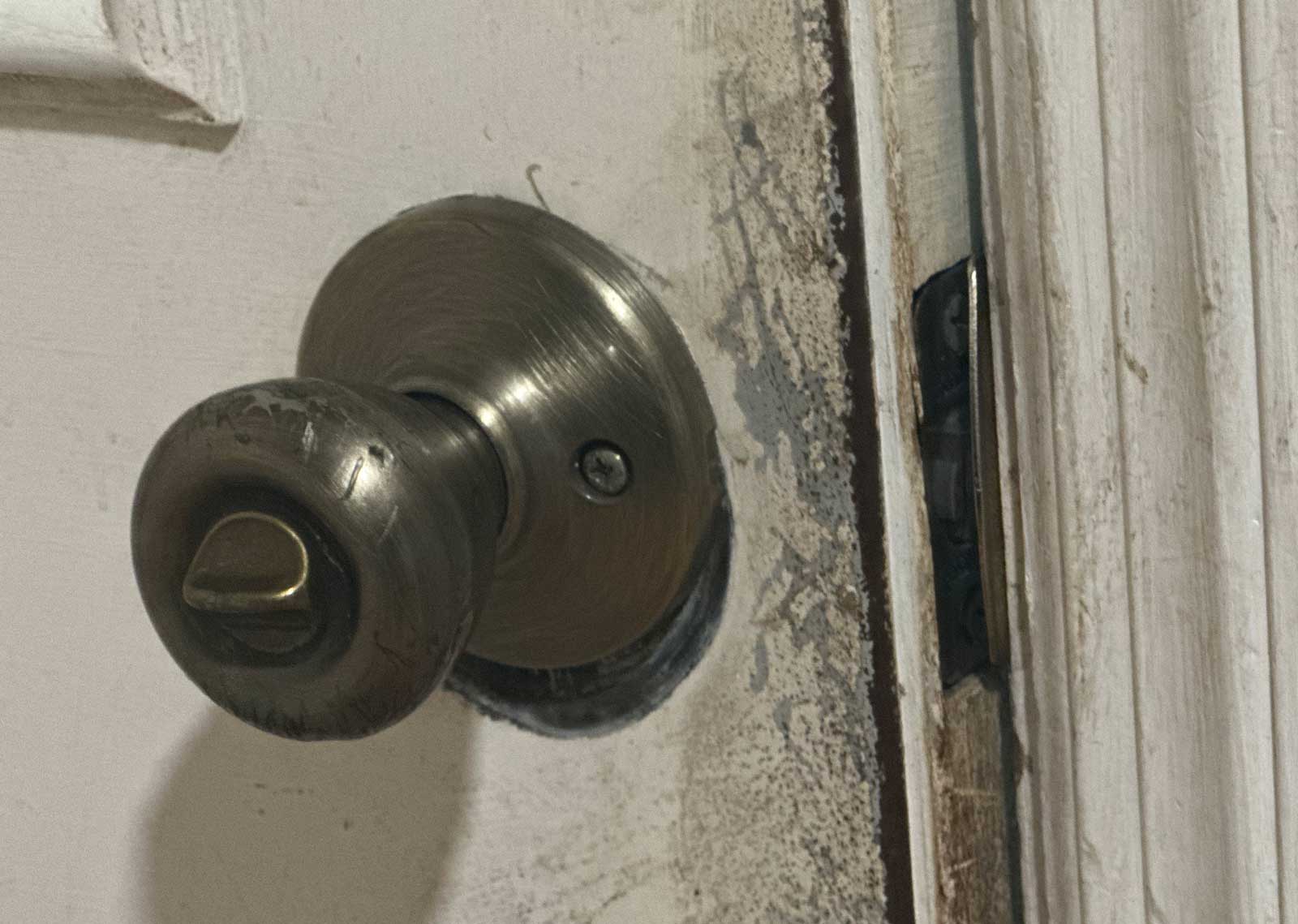
Identifying the Problem
Picture this: you’re running late for work and, as you scramble to leave the house, your door knob won’t latch. A sense of urgency takes over, but fear not, we’re here to help! Let’s dive into identifying the problem and get you back on track.
One major culprit of a door knob not latching is a jammed latch assembly. Over time, dust and debris can buildup inside, causing the latch to stick and not function properly. If you notice your door knob is loose, it might also be the result of a worn-down latch assembly. A little cleaning and resetting could be just the trick.
Speaking of loose door knobs, another common issue is a misaligned door lock. You know, when the latch doesn’t quite line up with the hole in the strike plate. This can happen due to settling or the screws in the hinges working themselves loose. Don’t worry, you’re not the only one who’s lost sleep over a small detail like this.
It’s essential to recognize the type of problem you’re facing, and in order to do that, a little diagnosis is needed. First, check if the latch is actually stuck or if it’s just misaligned. You can easily do this by giving your door a slight push or pull to see if the latch catches. If it does, that’s your (friendly) neighborhood misalignment! If it doesn’t, then the issue may lie within the latch assembly itself.
Now that we’ve pin-pointed the problem, let’s move on to the next step: fixing this pesky latch. Remember, time is ticking, and we want to get you out that door and on your way!
Fun fact – I once spent an entire weekend trying to figure out why my door latch wasn’t working, only to realize it was simply jammed with dirt! Grab a cloth, clear out any debris, and who knows, your issue could be resolved just like that. No judgment here, we’ve all been there.
In a nutshell, there are a few potential culprits causing your door knob woes: a jammed latch assembly, a loose door knob, or a misaligned door lock. By diagnosing the problem and identifying the issue, we’re on our way to a speedy resolution that will get you out the door and on with your day. Remember, the clock is ticking, so let’s get that door latched and on to the next adventure!
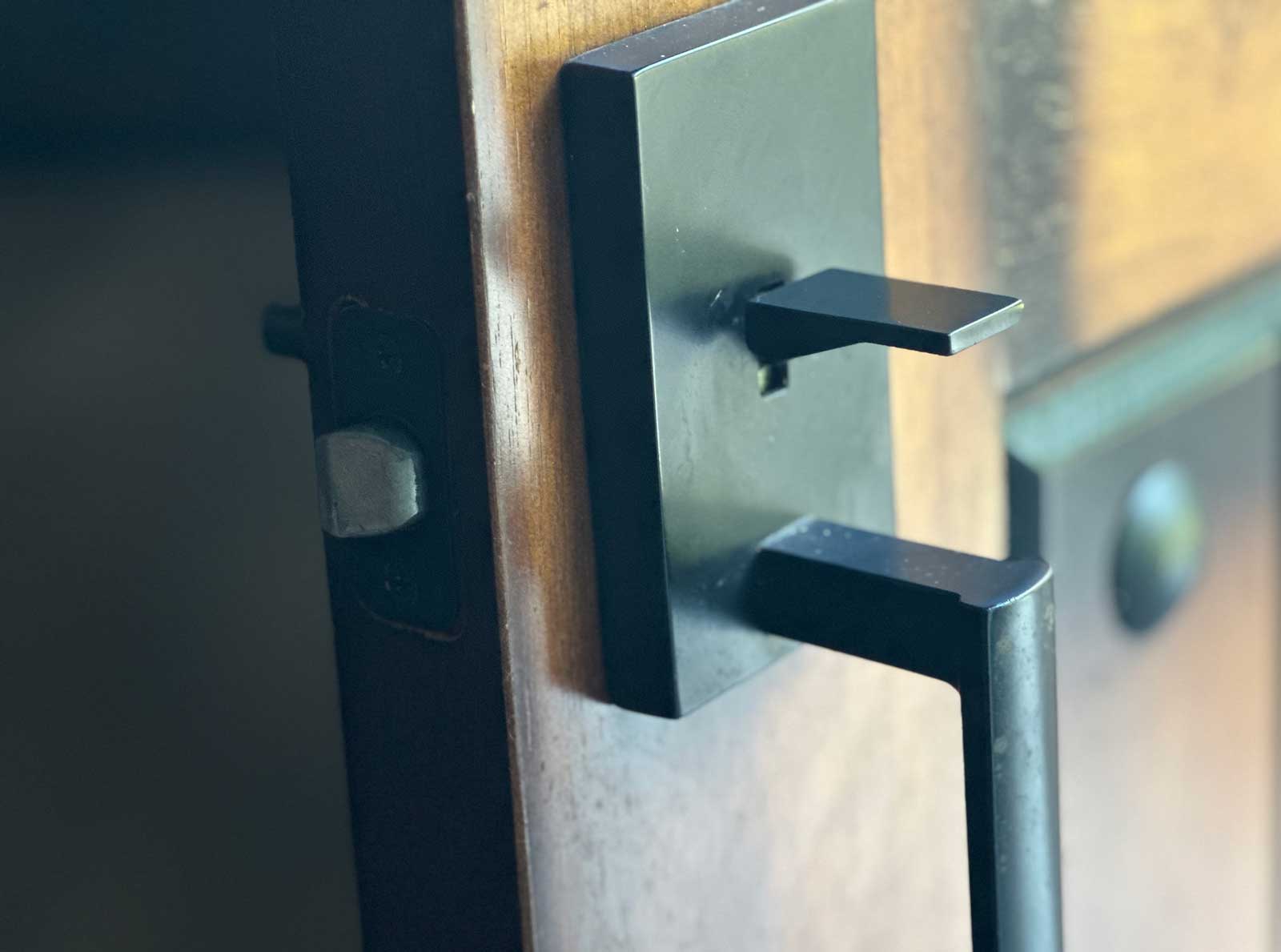
Understanding How a Door Knob Works
Ah, the mysterious inner workings of a door knob. It’s something we use daily, yet often take for granted. In this brief section, we’ll demystify the magic behind that satisfying “click” sound when a door latch connects smoothly. Sit tight and relax, because you’re about to become a door knob expert (fancy title, right?).
Let’s begin with the core components. A typical door knob mechanism consists of several essential parts, including the latch, spindle, spring, internal mechanism, and lock. When properly aligned, these parts work together seamlessly to provide security and smooth door operation.
The heart of the operation lies within the latch bolt. It’s that little metal piece that extends from the door’s edge, keeping the door closed when it’s engaged with the strike plate. Next up is the spring, which is responsible for retracting the latch bolt when you turn the door knob. It’s a small, unassuming component that plays a significant role in making your life a lot easier (and your door-opening experiences a lot smoother).
Now, let’s talk about the door knob’s best friend: the spindle. This rod-like component connects both sides of the door knob, and when you turn it, it activates the internal mechanism. That’s when the real magic happens – the internal mechanics manipulate the latch bolt to retract into the door, releasing it from the strike plate and allowing the door to open freely.
One time, at my cousin’s place, we were locked out due to a faulty door lock mechanism. It was quite the experience as we had to disassemble and reassemble the entire setup. A lesson well learned: never underestimate the power of a well-functioning door knob!
Don’t forget about the lock – you know, that little button or switch typically found on the inside of the door handle. A simple turn or push of this feature secures the spindle, preventing the door from opening even when the external door knob is turned.
There you have it – the fascinating inner world of door knobs, broken down to its essential components. Next time you hear that satisfying “click” sound, take a moment to appreciate the intricate dance of mechanisms that make it happen – all while maintaining that confident, knowledgeable, and clear tone you’ve come to expect from this informative piece.
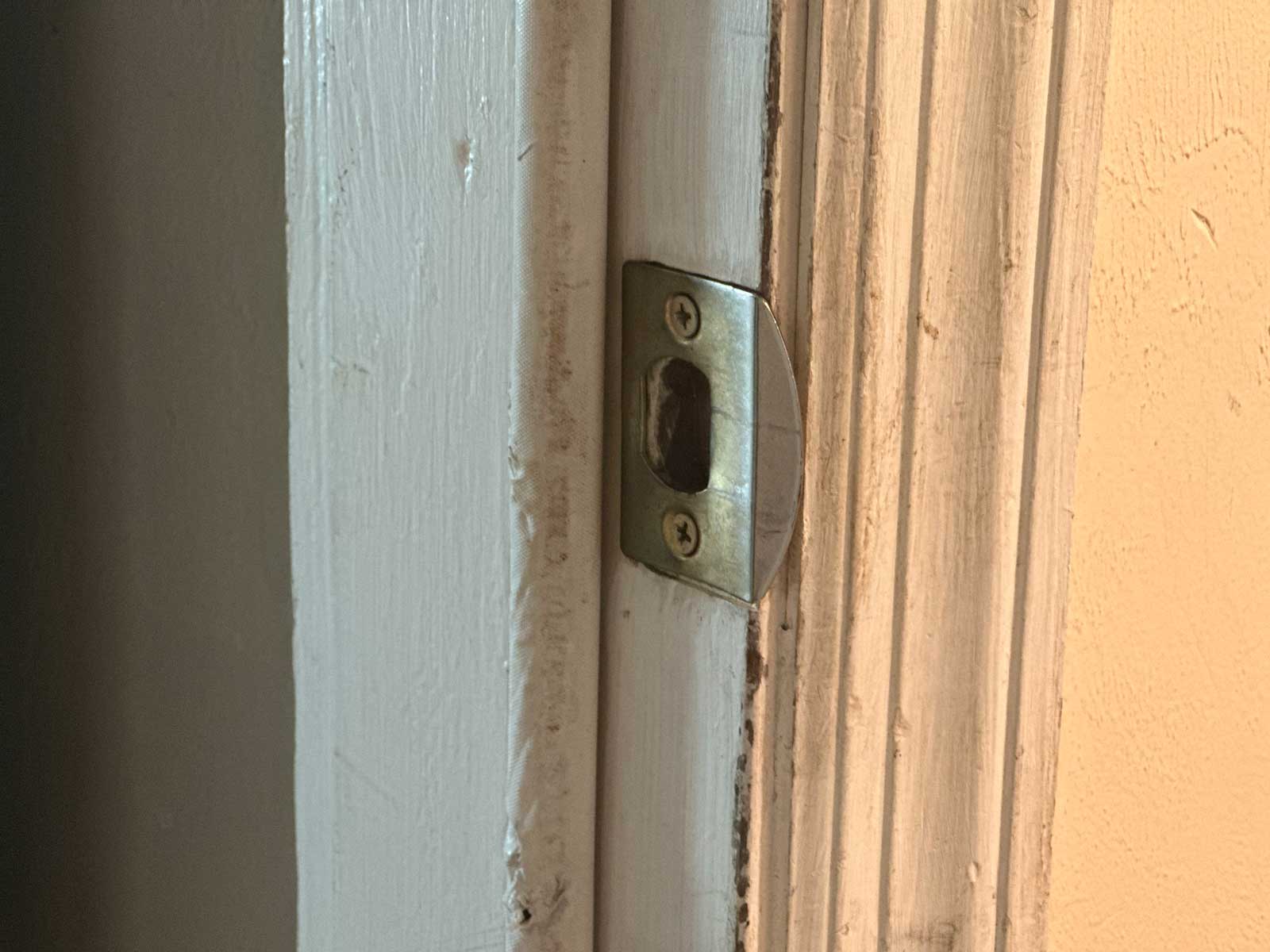
Causes of a Door Knob Not Latching
You know that frustrating feeling when your door knob just won’t latch? Trust me, I’ve been there too (hello, sleepless nights). But fret not, dear reader, for I have some answers for you. Let’s dive into the most common reasons your doorknob is giving you a headache.
Misalignment: Sometimes, the issue is as simple as the door latch not lining up with the strike plate. Shifting houses, remodeling, or even humidity can cause slight shifts in the door’s alignment, leading to latch issues. One simple trick to detect misalignment is the “lipstick test”; smear lipstick on the latch, close the door, and check the strike plate for consistent marks.
Humidity: Speaking of humidity, did you know it can wreak havoc on your doors? High humidity causes wooden doors to expand, affecting the alignment needed for proper latching. When humidity levels drop, the door might return to its original size and latching position. Keep an eye on indoor humidity levels and invest in a dehumidifier if needed.
Rust and wear and tear: Over time, door knobs, latches, and strike plates can develop rust, which hinders the smooth operation of the latch system. Also, constant use can weaken latches or create deformities, affecting their functionality. Regular maintenance and quick replacement of damaged parts can save you a lot of frustration.
Door frame and hinge issues: The root of the problem may lie in the door frame or hinges. Foundation shifts, poor installation, or warped frames can affect how the door hangs, causing it to rub against the jamb or sit crookedly, preventing the latch from working correctly. Adjusting the hinges or fixing the frame can often solve the problem.
Pressure differences: Ever experienced a door that refuses to stay closed on a windy day? It could be due to air pressure differences between the interior and exterior of your home. Sealing gaps around windows and doors, or installing a weather strip, can help alleviate this issue.
There you have it – a closer look at the culprits behind a non-latching door knob. While it’s good to know the possible causes, diagnosing the specific issue with your door might require a professional’s touch. Remember: a little preventive maintenance goes a long way in keeping door latch problems at bay.
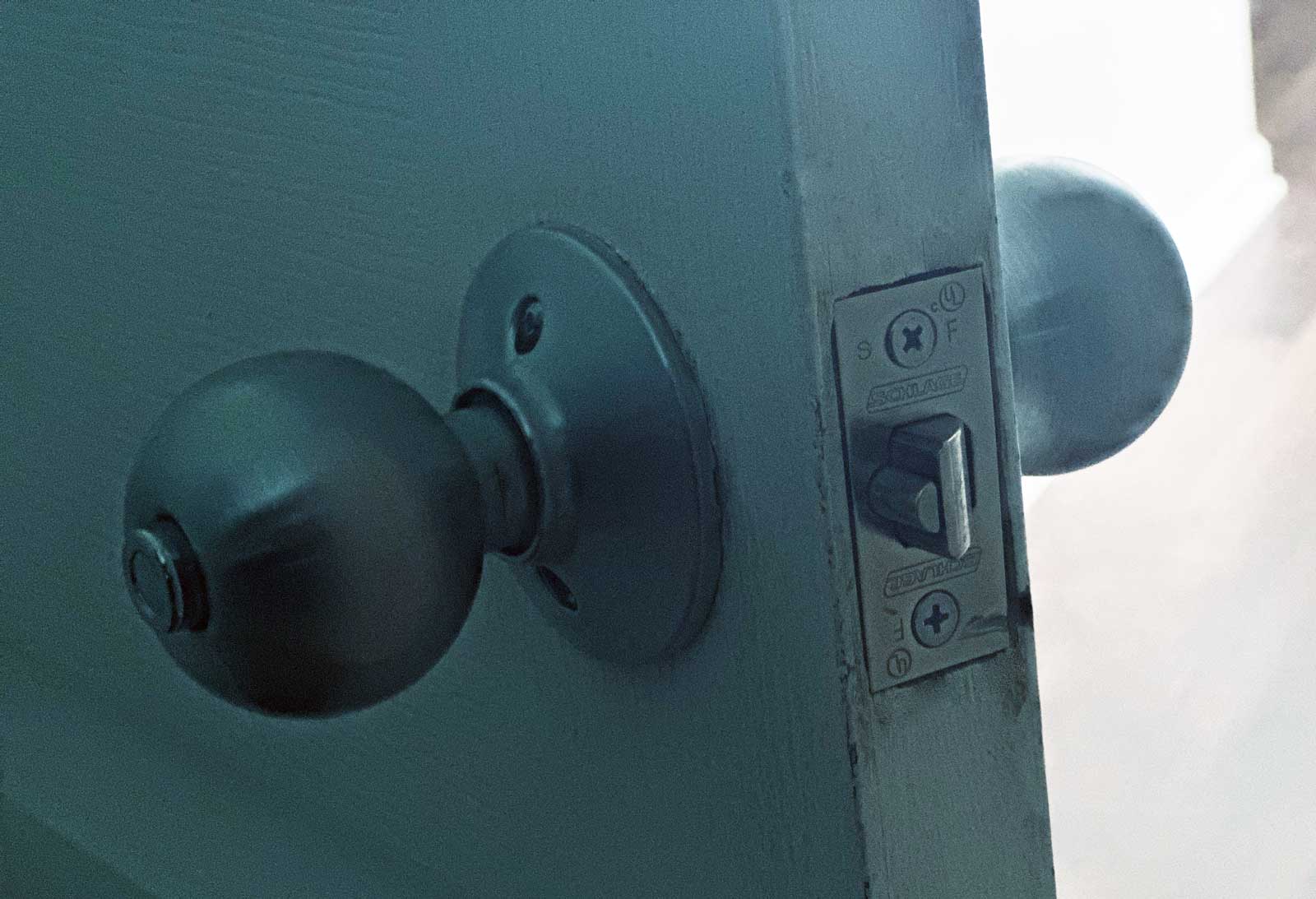
Inspecting the Door Knob
(First, let me tell you a secret.) One morning, I discovered my doorknob wouldn’t latch properly, and it made me late for work. I was annoyed and frustrated, but learned some valuable tips about inspecting door knobs that I’ll share with you today.
To start, grab your trusty screwdriver and carefully examine the latch hardware. The set screws are usually found at the base of the knob, close to where it attaches to the door. If your door knob is loose, tightening these screws can sometimes fix the issue – but let’s not jump to conclusions just yet.
Next, check the spindle. This is the connecting rod that goes through the door and links both sides of the doorknob. Ensure it’s properly aligned and seated in the latch mechanism. In many cases, a misaligned spindle could be the reason why your door knob isn’t latching.
Now, turn your attention to the latch bolt – this is the part that slides in and out when you turn the doorknob. If the latch bolt isn’t extending or retracting smoothly, it could be due to a worn-out or damaged part. In this scenario, you might need to replace the entire lock mechanism. But let’s hold our horses – there’s more to consider.
Examine the door lock and key as well. A stuck or damaged key might be hindering your door knob from latching. In such cases, lubricating the lock might be the solution to your problem.
Lastly, don’t forget to inspect the doorjamb and strike plate. If the latch bolt isn’t properly reaching the strike plate, try adjusting the strike plate’s position, or even replace it if necessary.
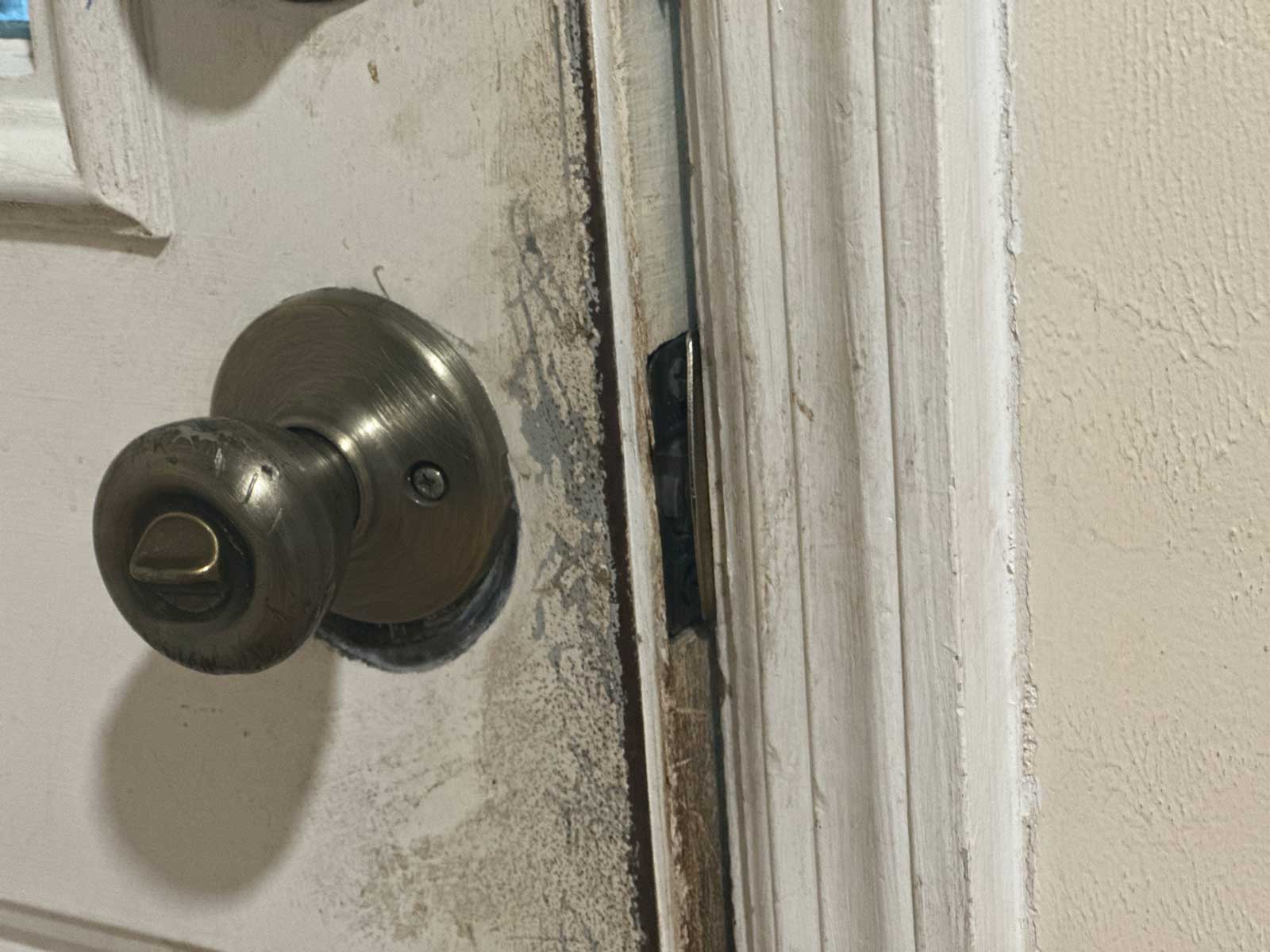
Inspecting the Door Frame and Latch
You just got home after a long day at work, and you’re greeted by a stubborn door that refuses to latch. Frustrating, right? Worry not! Let’s dive into inspecting your door frame and latch for some quick fixes that’ll have your door working smoothly in no time.
First things first, take a closer look at the door frame and the strike plate. This mighty little piece is crucial for proper alignment and latching. Is it loose or installed at an odd angle? Grab a screwdriver and tighten it, or adjust its position if required. Give the door a try. Voila! Problem solved? If not, let’s keep moving.
Now, let’s examine the door latch itself. Over time, wear and tear might make it a little stubborn. Check for any debris or damage inside the keyhole. No luck? We’re not done yet.
A misaligned strike plate can be a sneaky culprit. The latch may be hitting the strike plate a tad too high or low, preventing it from securing your door properly. Remember the time your car’s alignment was off, and it made a world of difference after you fixed it? It’s time to realign your door’s strike plate just like that!
To do this, start by loosening the screws on the strike plate, and adjust it accordingly. You may need to chip away some wood from the door frame to create enough space for perfect alignment. (Note: It’s a great time to impress your significant other with your handy skills.)
Once you’ve made these adjustments, test your door lock again. Still no luck? Don’t worry; you’ve got this! Inspect the door latch mechanism and ensure it’s not stuck or rusted. A little lubrication may be all it needs.
By following these steps, you’re well on your way to solving the mystery of your stubborn door. And remember, a functioning door not only keeps the bad guys out but also won’t make you nearly as late to tomorrow’s big meeting.
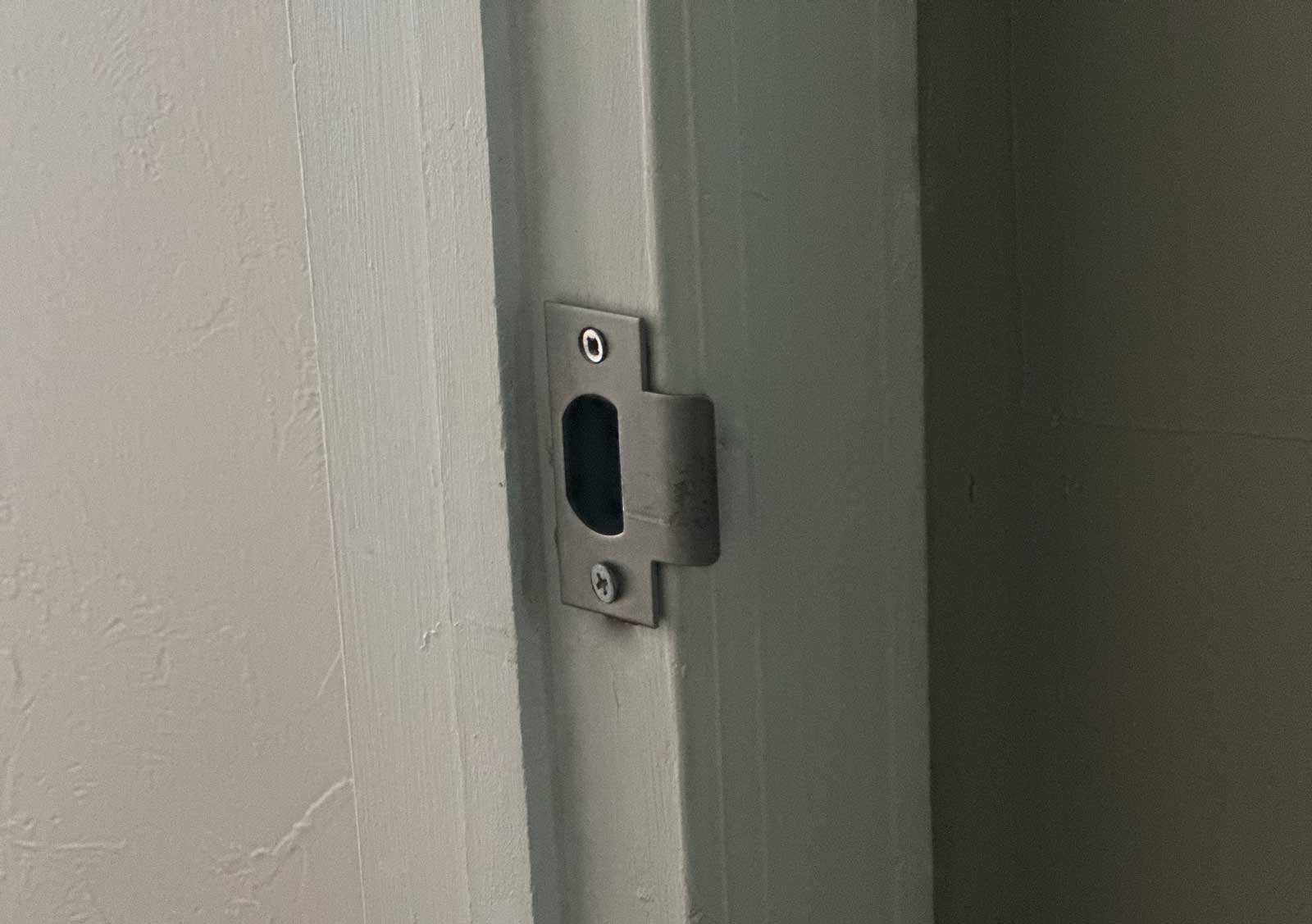
Working on the Latch Assembly
Welcome to the world of door latches! Let’s dive into what can be done when your door knob won’t latch. You’ll soon realize that with a bit of knowledge and elbow grease, you can get that pesky door latch back in working order. Trust me, I’ve been there – that one time my bedroom door refused to cooperate, and I needed a quick solution.
First, let’s understand the various components of the latch assembly. Your standard door lock mechanism is comprised of a few key elements, like the latch bolt, spring, cylinder, and other parts that work together in perfect harmony (well, most of the time) to keep your door securely closed.
Now, when a door latch gets jammed or stuck, it can be frustrating, but fear not! It’s not the end of the world – or your door latch. There are a few easy ways to address common latch issues and get that stubborn door back in line.
One quick approach to solving a stuck latch is to slightly enlarge the door latch opening in the strike plate . This can help the latch bolt catch in the strike plate and ensure a smoother latching action (check out this DIY tutorial for more information).
If the issue persists, it might be time to take a closer look at parts of the assembly, particularly the latch bolt and spring. Here are some steps you can take:
- Check the latch bolt: Ensure it is extending and retracting smoothly. A bit of lubricant may help get things moving again, but be careful not to overdo it.
- Examine the spring: A damaged or broken spring can lead to a malfunctioning latch. Inspect it carefully and replace it if needed.
Finally, let’s not forget about the cylinder. The cylinder plays a crucial role in your door lock mechanism, and a faulty one could be the source of your latch troubles. If the above steps haven’t resolved your issue, it might be time to consider replacing your door lock cylinder.
And there you have it – a concise guide to working on your latch assembly. Say goodbye to jammed door knobs and hello to smooth latching! Just like that time I finally fixed my bedroom door, you too will soon enjoy the sweet feeling of a door that latches just right.
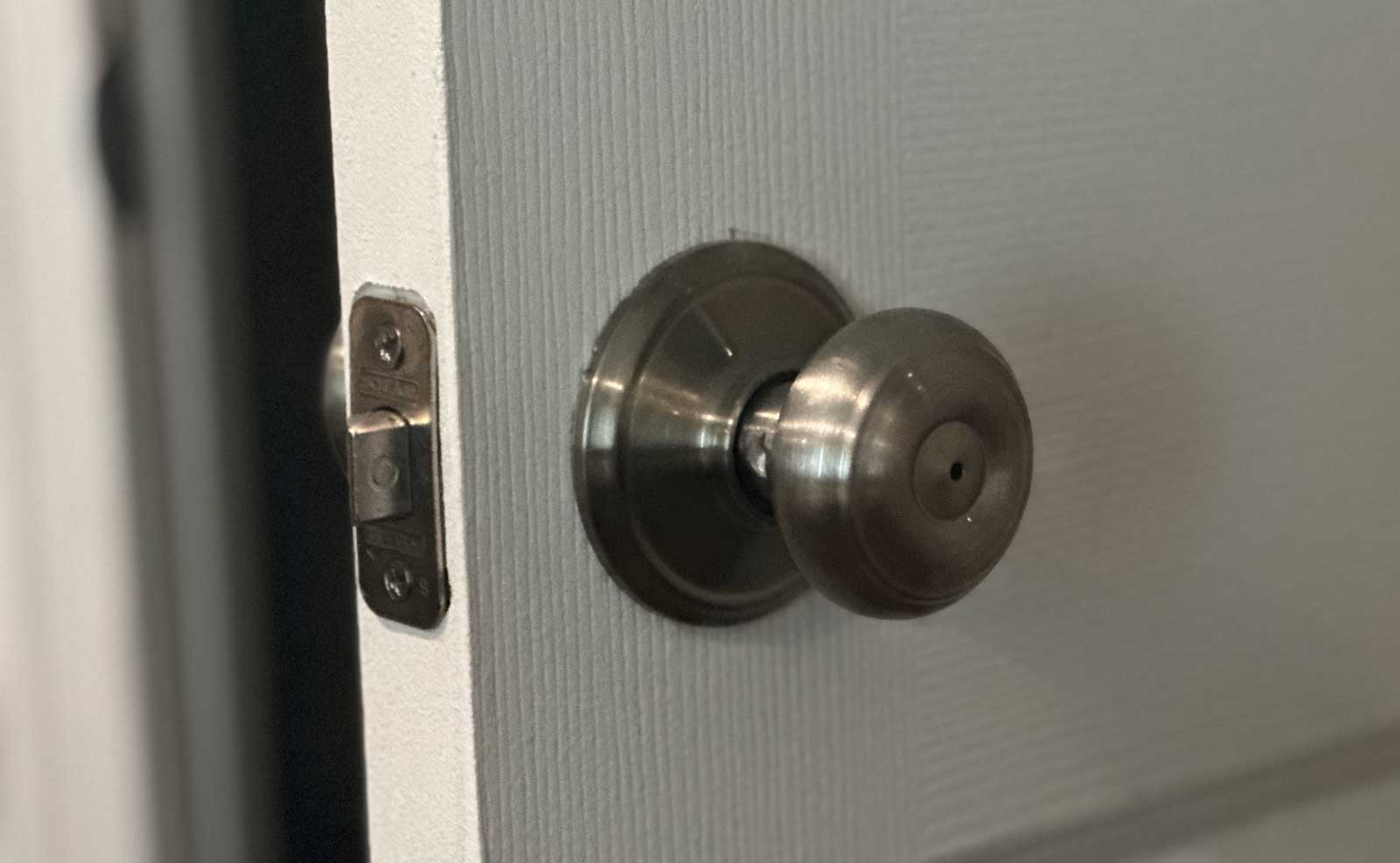
When to Replace the Door Knob
Picture this: you’re coming home after a long day, and as you try to open your front door, you realize the door knob won’t latch. It wiggles, wobbles, and proves to be an uncooperative piece of hardware. Frustration begins to seep in. But don’t worry, I’ve been through this exact situation, and I’m here to help with some guidance on when it’s time to replace that pesky door knob.
First, assess the level of wear and tear on the door knob. Over time, components within the door knob can slowly deteriorate, leading to a loose door knob and an inability to latch. If you notice significant wear and grime build-up, or if the door knob itself looks aged and corroded, it’s a clear sign that replacement may be needed. Trust me, it’s better to replace now, before the situation escalates and you end up locked out (or in)!
You might be thinking, “Well, what if there isn’t much visible wear, but the door knob still refuses to cooperate?” Don’t fret! Sometimes the issue lies within the internal mechanism, specifically the spring inside the latch. When this spring fails, the latch can’t engage with the strike plate, resulting in an unsecured door. You don’t want your door to be the weak link in your home’s security, do you?
Now, if the internal mechanism isn’t the problem, take a moment to consider the overall function and practicality of your door knob. Is it meeting your current needs? A bold yet straightforward question that deserves your attention. If not, it might be time for a change – even if the door knob isn’t entirely broken.
In conclusion (without concluding), the decision to replace your door knob depends on the visible wear and tear, the internal mechanism’s functionality, and its ability to meet your current needs. So the next time your door knob refuses to latch, remember these tips to quickly assess the situation and confidently make a decision. And who knows, you might even enjoy the fresh feeling of a brand new, fully-functioning door knob!
When to Fix the Door or Latch
You just got home after a long day, and as you turn the doorknob, it refuses to latch! It’s time for a quick fix to secure your home and put your mind at ease. Let’s dive into when and how to repair that stubborn door latch.
First, assess the situation by checking the door and the latch’s condition. Are the screws loose, or is the frame misaligned? A simple tightening of the screws can often solve the problem, but if the door frame is sagging, you might need to use a rotary tool to widen the latch opening. Remember, safety first – grab your goggles and start grinding!
Sometimes, door hinges can be the culprit. Check if they’re causing the door to hang crooked, preventing the latch from engaging properly. Tightening, adjusting, or replacing worn-out hinges can bring back that satisfying click of a latched door.
Additionally, consider the lock mechanism. If the lock is sticking or jammed, it could be preventing the latch from securing in place. A thorough cleaning or replacing the lock might just do the trick.
(Unbelievable as it sounds, I once had to prop up a chair against my door all night after discovering this issue. Talk about a DIY security system!)
In conclusion, fixing a door latch isn’t as daunting as it seems. Taking a closer look at the different components may reveal the issue, and most solutions only require basic tools. You’ll be snug as a bug, behind a securely latched door, in no time.
Professional Involvement
You might find yourself wondering, “Is it time to call in the pros?” Well, sometimes DIY fixes just don’t cut it. In such cases, it’s wise to trust your home’s security to a professional locksmith. These experts have the necessary skills and tools to ensure the safety of your doors while maintaining their functionality.
Hiring a professional locksmith is more than just getting someone to install a new lock or fix a broken one. It also guarantees the security and convenience of your home, by providing the most effective solutions (and hey, they know a thing or two about keys). A locksmith will assess your door’s particular situation, identify underlying issues, and recommend appropriate safety measures to prevent future problems.
In the world of door latches, one-size-fits-all simply doesn’t apply. That’s where a professional locksmith comes in, with their wealth of experience and knowledge about various door hardware and locking systems. They’ll advise you on the most suitable choice for your needs, ensuring top-notch security for your family and belongings (because nothing is more important than keeping what you love safe).
A friendly reminder: your home’s safety isn’t something to take lightly. The skills of a professional locksmith could be the key (pun not intended) to preventing any unwanted access to your personal haven. So, when your door refuses to latch, keep your wits about you, and don’t underestimate the value of professional involvement.
On a personal note, I once faced a similar issue where my front door wouldn’t latch, and it left me feeling vulnerable in my own home. Hiring a locksmith improved not only the functionality of my door but also restored my peace of mind. Never underestimate the power of a well-latched door!
Remember, it’s better to invest in a professional locksmith now than to face the consequences of compromised safety later. Your home’s security is a high priority, so don’t hesitate to call for help when your door simply won’t latch.
Preventive Measures and Maintenance
Imagine this: you’re late for an important meeting, and your doorknob won’t latch, trapping you inside! Sounds like a nightmare, right? Well, worry not, because with a few preventive measures and regular maintenance, you can ensure your doorknobs stay functional and reliable.
First and foremost, lubrication is key. Just like a well-oiled machine, your door latch needs proper lubrication to avoid any issues. Routinely apply a lubricant like WD-40 or graphite to keep the internal mechanisms running smoothly (and who doesn’t like a smooth-running doorknob?). This little habit will save you a lot of headaches and late arrivals.
Another culprit is humidity. Believe it or not, humidity can wreak havoc on your door’s life. High levels of humidity cause wood to expand, leading to misaligned latches. To combat this, use a dehumidifier or invest in some moisture-absorbing products, a small effort that can have a significant impact on your door’s performance.
Maintaining your door hinges is equally crucial. Did you know that worn-out or loose hinges can result in a faulty latch? Yes, indeed! Keep an eye on those hinges, and tighten them up if they start to slack. Regularly inspect the hinges for rust and wear and tear because, let’s be honest, the last thing you need is a door falling off its hinges.
Now, let’s talk about the latch itself. To prolong the life of your door latch, give it the attention it deserves. Clean it of dirt and debris, and address corrosion proactively. Remember the personal anecdote I mentioned earlier? I once spent an entire Sunday afternoon trying to fix a rusty latch, and trust me, it’s not the way you want to spend your day off.
So, how about the doorknob? Well, just like other parts, it needs some TLC too. Keep it clean and free of grime, and ensure the screws are securely fastened. Loose screws mean a loose doorknob, and nobody wants that!
It’s all about being proactive! With a bit of care and preventive maintenance, your door latch and knob will remain in tip-top shape, saving you time, money, and the embarrassment of being stuck indoors when you should be out conquering the world.
Next Steps
Want to join others who are creating the most amazing home redesigns & renovations and get more tips, tricks and hacks on how to make your home the best it can be?
Join my brand new free private Facebook group, Remodel Reality to connect with other people like you to make your space the best!
